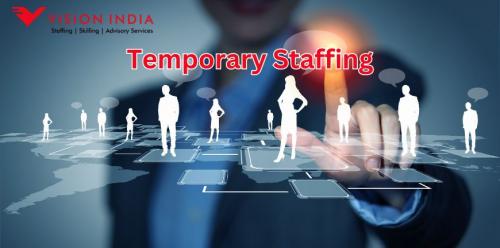What is payroll processing? Step-by-Step Guide on Process, Methods, and Challenges
Every company runs payroll processes to give salaries to their employees on time. But like many other firms, do you think payroll is just for releasing employee salaries? Let us clear that up for you. Payroll is much more than processing salaries; it involves many other crucial tasks that must be managed precisely. Managing everything while handling core activities can be daunting, highlighting the need for third-party agencies. Many payroll outsourcing agencies have been helping firms for decades. You can do various things to run your payroll that improve employee satisfaction and protect businesses from legal regulations. However, before going deep into what you could do, let us understand the payroll process entirely.
What is payroll processing in HR?
The payroll is the list of employees who are entitled to receive payments from the company. Moreover, payroll processing in HR involves the arrival of the net pay of workers after making the necessary deductions. It is vital to maintain an employee list, the advantages you offer to each worker or group of employees, and the tax deductions that must be made at the source, depending on the wages, to calculate the payout completely. The payroll process consists of three to four stages and tasks like defining salary structures, gathering candidate data, components, deductions, and allowances, setting up the required tax policies and other adjustments, and calculating the total payouts after adjusting all the business policies.
The entire payroll processing cycle includes filing, reporting, and providing paystubs to applicants after salaries are disbursed. In the simplest words, if payroll is the amount paid by the company to the workers, payroll processing is the process of accurately calculating employees' net pay, as per statutory compliances and firm policies.
How does a company effectively process payroll?
Let us now explore how the payroll process in HR works in the company. Payroll processing can be completed using technology or manually, depending on the speed at which companies want to complete it. Automated payroll is quicker than manual payroll, as most of the measures in payroll are done by the software with very little manual intervention. Starting with the preparation of worker lists and reviewing for compliance to categorise into groups and tax deduction at the start and ending with the calculation of the pay and the disbursal of the amount, everything is done using technology, which mitigates the risk of human error.
Most of the companies differ in their payroll cycles. A time between two consecutive paydays is called a payroll cycle. If a company pays workers every week, then the payroll cycle has a 7-day duration. On the other hand, some run a 30-day duration for the payout.
What are the five basic steps in processing payroll?
There are several steps in the payroll process, some of which are listed below!
Determine a policy for payroll: All the administrative tasks of the payroll process in the HR payroll policy consist of instructions on calculating salaries, what deductions to make for each worker, and how to schedule payments on payday. It gives candidates a clear understanding of what to expect on payday.
Collect and validate employee information: The employee data is collected while transparent about what information will be stored, how it will be used, and where it will be kept. Once the prospect information is collected, companies must validate the information and ensure that it is correct and that you have all the required info for payroll processing.
Regulatory compliance for payroll: In this step, all the regulatory compliances that must be attached are followed and enforced. The payroll process in India needs several laws to be maintained. For instance, according to the Minimum Wages Act, the minimum wage for a worker is fixed.
Figure out pay and start payout. Now, the actual process of payroll calculation is beginning. In this step, the formula created for the calculation to calculate employees' salaries after applying the deductions and counting the compensation. The payout also happens after this, and the salary paid to each candidate is on time.
Accounting and Reporting: Conducting payroll audits is pivotal to finding that the payroll process in HR is working in the required manner. In the accounting and reporting process, companies analyse every step of the payroll management process, from the beginning to the payout stage, and check for any issues. The payroll audit also occurs regularly to see if the payroll system is well-maintained or if any updates are required for compliance.
How do I process payroll manually?
Many companies search for how to process payroll manually. It is a labour-intensive task and requires a high degree of concentration and focus. Any mistake in a particular step will be carried over to the next stage and the next, leading to complications in the last. So, the manual payroll process is not advisable anymore. To protect your company from this,
Make sure you use automation for repeated tasks to confirm the payroll calculation is correct, even if you plan to calculate payroll manually at some steps. Also, in the manual payroll process, the steps are relatively easier.
What are some challenges to payroll processing?
Handling compliance with laws: The labour laws in any country change every one to two years. There is a requirement for HR teams to stay updated on these latest updates so that regulatory law and compliance are maintained in every payroll process in India. It is not just because of the fines companies would have to pay for non-compliance. It is also because of the advantage of government assistance they may get from being compliant, as is the case with the National Apprenticeship Scheme (NAPS) in India.
Protecting payroll data: Payroll data is pivotal in payroll processing, so it must be valid and maintained securely and privately. But remember that payroll data consists of sensitive data about your workers, which must be secure so that it is not shared with unauthorised sources who can use it to their benefit.
Mistakes in salary calculation: The formula taken may be too challenging or have been inaccurately fed in, resulting in errors. One way to overcome this is to partner with an agency to ensure such mistakes do not occur. Another option is to use tools that check for rules to confirm that the formulas and calculations are correct.
Incorporating multiple systems for payroll
To migrate data quickly to build formulas and set up computations on the data, agencies that take over payroll systems or move legacy systems to the cloud may need to link the payroll system with theirs. Because of this, having different systems integrated into your payroll will result in data fragmentation, non-overlapping updates, etc.
Conclusion
Handling the overall payroll system can be a challenge you do not want, especially when outsourcing. It will save you time in the short term and even save you a lot of money and a lot of costly errors in the long term. You can use Vision India Payroll Processing Services to secure your company's payroll process. It is a staffing agency that manages payroll processing for many organisations. It has years of experience in providing credible services to client companies. Not only payroll, but you can also outsource your hiring needs with this leading partner. Outsource your needs now!









Comments